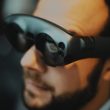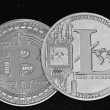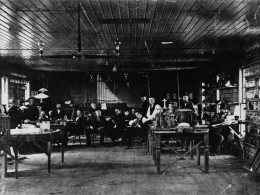Table of Contents Show
I. Origins: The Birth of an Innovator
Elon Musk’s journey begins in Pretoria, South Africa, on June 28, 1971, where he was born into a family that blended ambition with intellect. His father, Errol Musk, was an electromechanical engineer, pilot, and sailor—a man of many talents, whose disciplined demeanor left a lasting imprint on young Elon. His mother, Maye Musk, was a model and dietitian, whose resilience as a single mother navigating the world of fashion in the 1970s provided Elon with an early example of determination and independence.
Elon’s childhood was not a storybook tale. His parents divorced when he was ten, and Elon chose to live with his father—an experience he would later describe as harrowing. School was no sanctuary either; he was relentlessly bullied, at times so violently that he was hospitalized. But these adversities only seemed to fuel his inner world, one dominated by the boundless possibilities of science fiction and technology.
By the age of 12, Elon’s self-taught programming skills bore fruit when he sold a video game called Blastar to a computer magazine for $500. It was a modest start, but it hinted at the extraordinary future ahead. Musk was not just another gifted child; he was a boy who, even then, was looking beyond the horizon, imagining worlds yet to be built.
II. The First Forays: Silicon Valley and the Dot-Com Boom
Elon Musk’s migration to North America in 1989 marked the true beginning of his entrepreneurial journey. After a brief stint at Queen’s University in Ontario, Canada, Musk transferred to the University of Pennsylvania, where he earned degrees in physics and economics. But it wasn’t academia that would define Musk—it was the nascent tech industry, just beginning to bloom in the fertile ground of Silicon Valley.
Musk’s first significant venture, Zip2, was born from his recognition of the internet’s potential to revolutionize traditional industries. Zip2 was a city guide software for newspapers, a sort of primitive Google Maps with Yelp thrown in. Musk’s vision was to bring businesses online at a time when the internet was still a mystery to most. Zip2 caught the eye of Compaq, which acquired the company for nearly $300 million in 1999. Musk, then just 27, walked away with $22 million—a fortune by any measure, but it was only the beginning.
Next came X.com, an online payment company that would eventually become PayPal. Musk’s ambition with X.com was not just to create a payment system, but to redefine money itself—making it digital and decentralized long before these ideas became mainstream. PayPal, under Musk’s direction, grew rapidly, capturing the imagination of the tech world. But it wasn’t without turmoil. Musk’s aggressive leadership style, which pushed boundaries and people alike, led to clashes with co-founders and eventually his ouster as CEO. Yet, even after his departure, PayPal’s success was undeniable. When eBay purchased the company for $1.5 billion in 2002, Musk became one of the wealthiest men in Silicon Valley.
III. SpaceX: Reaching for the Stars
Elon Musk’s fortunes could have allowed him to live a life of luxury and ease, but comfort was never his goal. In 2002, driven by his belief that humanity’s future depended on its ability to become a multiplanetary species, Musk founded SpaceX. This new venture was his most audacious yet: to make space travel affordable and, ultimately, to colonize Mars.
The early days of SpaceX were a crucible of failure and frustration. Musk sank $100 million of his own money into the company, and by 2008, SpaceX was on the brink of collapse. Its first three launches had ended in disaster, and the fourth launch was a do-or-die moment. The failure would mean the end of SpaceX—and possibly Musk’s entire fortune. But against the odds, that fourth launch was a success. The Falcon 1 became the first privately developed liquid-fueled rocket to reach orbit, a feat that secured SpaceX a NASA contract and saved the company.
Musk’s vision for SpaceX was always grander than just getting to orbit. His ambition was to fundamentally lower the cost of space travel, and that required reusability. The development of the Falcon 9 rocket, with its revolutionary ability to land and be reused, was a landmark achievement. It was a concept that had been considered impossible by industry veterans, yet Musk’s relentless pursuit of the improbable turned it into reality.
SpaceX’s achievements continued to mount: from the Dragon spacecraft delivering cargo to the International Space Station to the successful launch of the Falcon Heavy, the most powerful operational rocket in the world. But Musk’s eyes remained fixed on Mars. His ultimate goal, as he repeatedly stated, was to make life multiplanetary. And with SpaceX’s ongoing development of the Starship, a fully reusable spacecraft designed to carry humans to Mars, Musk was closer than ever to realizing that dream.
IV. Tesla and the Revolution of Electric Cars
While SpaceX was grabbing headlines with its daring exploits, Musk was simultaneously orchestrating another revolution on Earth—this time in the auto industry. When Musk joined Tesla Motors in 2004, after leading the company’s initial Series A funding round, electric cars were little more than a novelty. They were slow, impractical, and had limited range—more a curiosity than a viable alternative to gasoline-powered vehicles.
But Musk had a different vision. He saw electric vehicles not just as a niche product, but as the future of transportation. His ambition was to accelerate the world’s transition to sustainable energy, and Tesla was the vehicle (quite literally) for that change. The Tesla Roadster, launched in 2008, was the company’s first real product, a sleek sports car that shattered preconceptions about electric vehicles. It was fast, stylish, and—most importantly—practical, with a range that made it a viable alternative to traditional cars.
Yet, the Roadster was just the beginning. Musk’s true ambition lay in mass production, in bringing electric vehicles to the mainstream. This led to the development of the Model S, a luxury sedan that redefined what an electric car could be, followed by the Model X SUV, and eventually the Model 3, Tesla’s attempt at a mass-market electric car.
The road was far from smooth. Tesla faced numerous production challenges, and there were moments when the company teetered on the edge of bankruptcy. But Musk’s tenacity and willingness to bet everything on his vision—sometimes even sleeping on the factory floor—saw Tesla through its darkest hours. By the mid-2010s, Tesla had become the most valuable car company in the world, not just because of its vehicles, but because of its role in pushing the entire auto industry toward electrification.
Beyond cars, Tesla’s innovations extended to energy storage and solar power, with the development of the Powerwall battery and the acquisition of SolarCity. Musk’s vision was holistic: to create a sustainable energy ecosystem that would power homes, businesses, and vehicles with clean energy. It was a bold, comprehensive strategy aimed at tackling one of the greatest challenges of our time—climate change.
V. Legacy: A Man of the Future
Elon Musk’s life and career have been defined by his unyielding drive to push the boundaries of what is possible. Whether in the vacuum of space or the bustling streets of our cities, Musk has repeatedly demonstrated an ability to see the future before others do—and then to make it a reality.
His ventures have not been without controversy. Musk’s leadership style—intense, demanding, sometimes erratic—has been criticized, and his public persona, particularly on social media, has been polarizing. Yet, even his detractors cannot deny the impact he has had on multiple industries and on the world at large.
Musk’s work with SpaceX, Tesla, and other ventures like Neuralink (which aims to merge the human brain with AI) and The Boring Company (which seeks to revolutionize urban transportation with underground tunnels) is driven by a singular vision: to secure the future of humanity. Whether that future lies in sustainable energy, space colonization, or the augmentation of human capabilities, Musk is at the forefront, pushing the limits of technology and imagination.
As of today, Elon Musk’s legacy is still being written. He is a man who defies easy categorization—part visionary, part engineer, part entrepreneur. But above all, he is a man driven by the belief that the future is ours to shape, that no challenge is too great, no dream too far-fetched. His life’s work is a testament to the power of vision, tenacity, and the relentless pursuit of the impossible.









